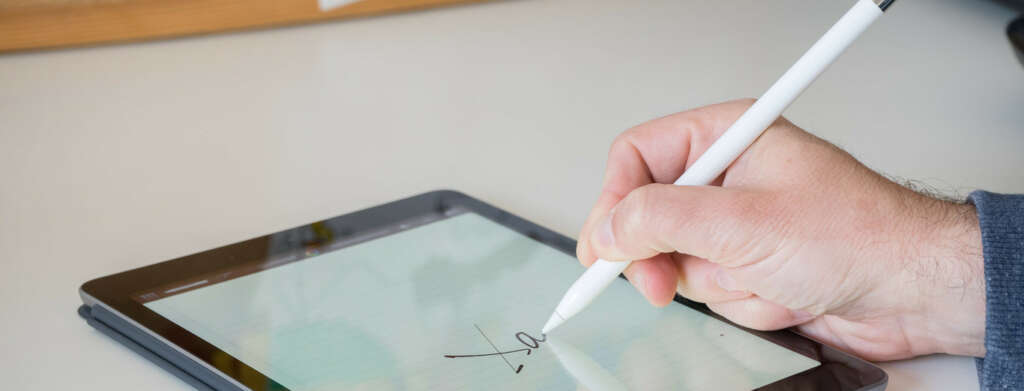Table of Contents
Introduction
The Apple Pencil has transformed the way we interact with iPads, offering unparalleled precision for writing, drawing, and navigating. While the traditional method of connecting an Apple Pencil to an iPad involves plugging it in, there are scenarios where this might not be feasible or desirable. Whether due to the unavailability of a charging port or simply seeking a more convenient method, knowing how to connect your Apple Pencil to your iPad without plugging it in is a valuable skill. This comprehensive guide will walk you through the process, ensuring a seamless connection every time.
Understanding Apple Pencil Compatibility
Before diving into the connection process, it’s crucial to understand which Apple Pencil models are compatible with your iPad. Apple offers two generations of Apple Pencils, each with distinct compatibility and connection protocols.
- First-Generation Apple Pencil: This model is recognizable by its cylindrical shape and removable cap, which reveals a Lightning connector used for charging and pairing. It’s compatible with older iPad models, including the iPad Air (3rd generation), iPad mini (5th generation), and earlier versions of the iPad Pro.
- Second-Generation Apple Pencil: This more advanced model features a sleeker design with a flat edge and wireless charging capabilities. It magnetically attaches to the side of compatible iPad models for pairing and charging. The second-generation Apple Pencil is compatible with newer iPad Pro models and the latest iPad Air versions.
The connection process varies between these two generations, particularly when looking at how to connect without plugging in.
Why Connect Without Plugging In?
You might wonder why someone would need to connect an Apple Pencil to an iPad without using the plug-in method. There are several reasons:
- Convenience: Sometimes, you might not have immediate access to a Lightning port or your iPad might already be connected to another accessory.
- Reducing Wear and Tear: Regular plugging and unplugging can cause wear on the iPad’s Lightning port and the Apple Pencil’s connector.
- Urgent Need: In situations where the Apple Pencil’s battery is depleted, and you need to use it urgently, knowing a quick alternative method to connect can be a lifesaver.
Step-by-Step Guide to Connect Apple Pencil to iPad Without Plugging In:
- For First-Generation Apple Pencil:
- Unfortunately, the first-generation Apple Pencil requires a physical connection to the iPad for initial pairing. However, once paired, reconnections can happen wirelessly as long as the Bluetooth is enabled on the iPad. If the Apple Pencil’s battery is depleted, consider using a compatible Lightning adapter for charging.
- For Second-Generation Apple Pencil:
- The second-generation Apple Pencil offers a more straightforward wireless connection. Simply attach the Apple Pencil to the magnetic connector on the side of your compatible iPad. The iPad’s screen should display a pairing request; tap “Pair” to connect the devices.
Troubleshooting Common Connection Issues
Even with the straightforward process of connecting an Apple Pencil to an iPad without plugging in, you might encounter some issues. Here are common problems and their solutions:
- Apple Pencil Not Pairing:
- Ensure your iPad’s Bluetooth is turned on.
- Restart your iPad and try connecting again.
- If using a first-generation Apple Pencil, check for dirt or damage on the Lightning connector.
- Apple Pencil Not Responding After Connection:
- Confirm that your Apple Pencil is charged.
- Disconnect and reconnect the Apple Pencil.
- For the second-generation Apple Pencil, ensure it’s correctly aligned with the magnetic connector.
- Inconsistent Performance:
- Check for any software updates for your iPad, as these can include fixes for peripheral connectivity.
- Reset your iPad’s network settings, which can sometimes resolve Bluetooth issues.
Maximizing Your Apple Pencil Experience
To get the most out of your Apple Pencil, consider these tips:
- Maintain Battery Life:
- For the first-generation Apple Pencil, plug it into your iPad for charging when not in use. For the second generation, attach it to the magnetic strip on your iPad.
- Monitor your Apple Pencil’s battery life via the Battery widget on your iPad.
- Best Practices for Syncing and Use:
- Keep your Apple Pencil paired with one iPad at a time to ensure a stable connection.
- Regularly update your iPadOS to take advantage of any enhancements or fixes related to Apple Pencil use.
Conclusion
Understanding how to connect your Apple Pencil to your iPad without plugging it in enhances the flexibility and functionality of your device. Whether you’re using a first or second-generation Apple Pencil, this guide aims to ensure you can effortlessly establish a connection, troubleshoot common issues, and enjoy the full range of features your Apple Pencil and iPad offer. Embrace the advanced capabilities of your Apple devices, and enjoy the seamless integration of the Apple Pencil into your digital workflow.


